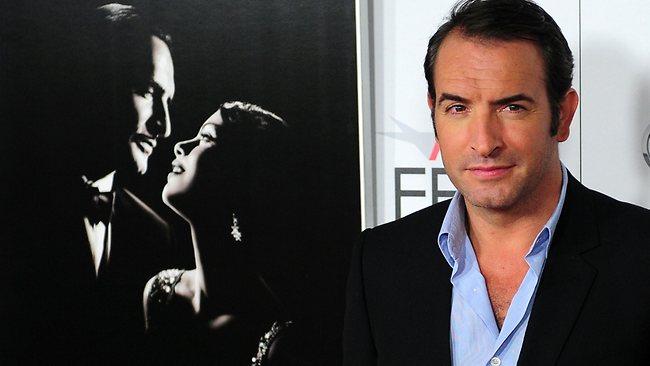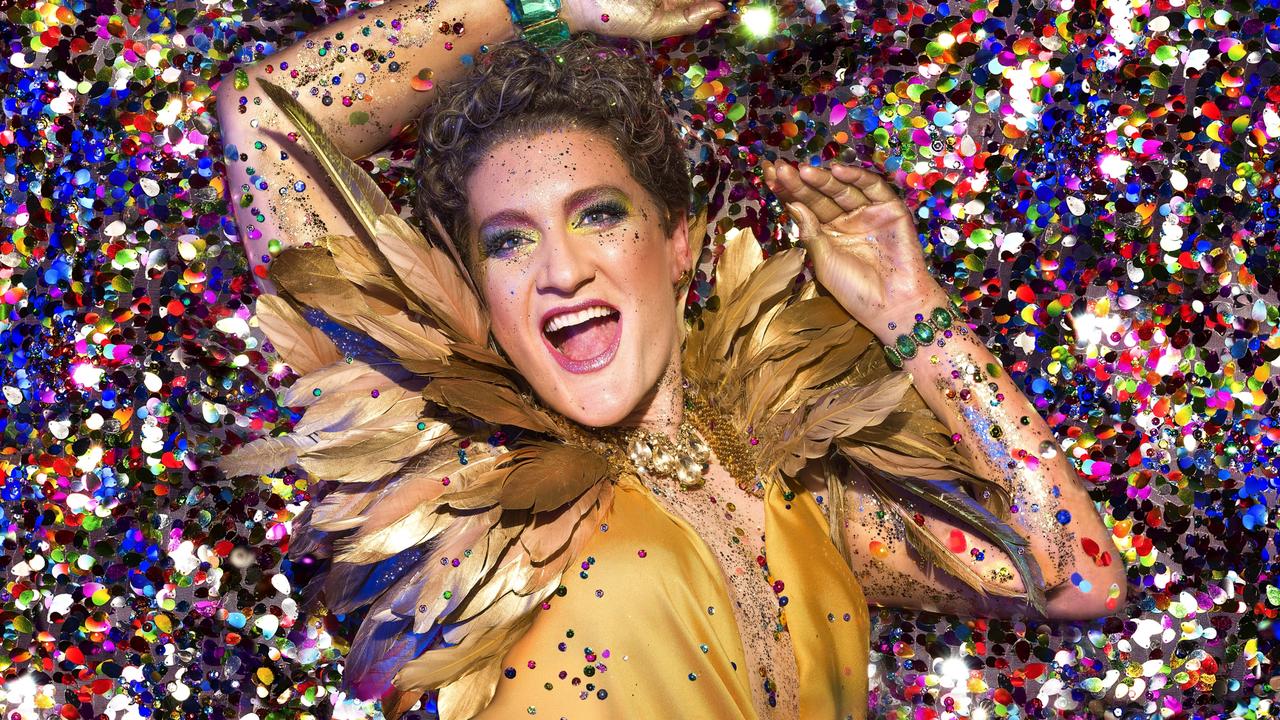Everything old is new again in The Artist
WHEN French actor Jean Dujardin told his friends what his latest project was, he always met the same reaction.

WHEN French actor Jean Dujardin told his friends what his latest project was, he always met the same reaction. He was starring, he would explain, in a silent, black-and-white film, a fantasy concocted by an overly ambitious writer-director.
No matter that it has now won Dujardin a best actor award at Cannes, and is being touted as an Oscar contender, with a nomination last week from the Directors Guild of America for writer-director Michel Hazanavicius. The actor takes on a strong French frown and gives the recurring response: "You mean silent -- silent?"
Eh, oui. This is the challenge The Artist sets us. The story of a movie star left on the scrapheap by the advent of talkies, it's already a success and is beginning to snowball. The Weinstein Co's Harvey Weinstein picked it up for US distribution before Cannes, and it won the New York Critics Circle best picture prize.
"We did everything to please," Dujardin says. "After all, we also make films to please!" That much is clear from the story of his character, George Valentin, who is riding high in 1927 as the star of wordless films, but is eventually undone by his unwillingness to accept the huge change coming his way. To make matters worse, the woman he adores, the zingy starlet Peppy Miller (Berenice Bejo), takes his place, becoming the new -- talking -- queen of the silver screen.
As their story is played out, Hazanavicius uses every trick he can lay his hands on to create the ultimate pleasure vehicle -- dream sequences, car chases, dance routines, the lot. As befits the genre, it has oodles of dramatic music and the obligatory intertitles. The actors throw themselves full tilt into the game of playing silent: winking, smiling, mugging, frowning to fantastic effect, gestures often 10 times the size they would normally be. The film relies heavily on a charming, wordless jack russell, who is pivotal to the plot and has even inspired a nomination campaign on Twitter (ConsiderUggie). It's all dog, no dialogue.
The feedback has been "unbelievable", Dujardin says. But, of course, there are more expectations now; they seem to sit a little heavily on his matinee-idol brow. Forty next June, he has the perfect face and physique for the part; in fact, it was written for him. It was, he repeats, "un plaisir".
Cannes, back in May, was a hoot. "I discovered the film there, on that huge screen," Dujardin says. "People were enthusiastic, giving lots of comments -- many really loved the film." He didn't feel pressure then, but now, he says, laughing ruefully, "People are trying to give it to me!" They seemed so out of the running in Cannes, "it didn't feel like we were in the same category as the others".
But the novelty of silence surprises, enchants and eventually seems normal. As Dujardin tellingly puts it: "You go along with the game." As with all the best games, however, it's a mix of simplicity and a whole lot of slog. That much is true of the acting. "I had two poles," the actor says. "Overdoing it, then doing tiny, minimalist things."
Hazanavicius had wanted to make a silent film for at least 10 years, but nobody was up for it. What changed was his growing reputation (he directed Dujardin in two hit spy spoofs in France) and the intervention of a bold producer, Thomas Langmann. He wanted Hazanavicius to create a new, high-tech version of Fantmas, a cult French villain. Hazanavicius suggested Fantmas as, yes, a silent movie, in black and white. Though it had been done like this before (in the 1920s, obviously), Langmann wasn't sold. Then the director described a few sequences to him. "And I saw his eyes . . ."
Yet how to sell it to a wider public? Black and white is one thing; it has always resurfaced here and there, from Ed Wood to Good Night, and Good Luck. Silence, however, is a shock. (Well, silence to an extent: there is the soundtrack, composed by Hazanavicius's regular collaborator, Ludovic Bource; and it's telling he was the first person the director mentioned his wild idea to, more than a decade ago.)
It helped Hazanavicius's cause that this is a silent film about silent film -- it's a world where blowing huge kisses or doing big puppy-dog eyes, instead of saying please or thanks, is quickly acceptable. And The Artist is a homage to great films of the past; a love letter to the movies.
"I accept the term," the director says, "but I get the impression, when one says that there's a guy in a cape who says" -- he brandishes an imaginary quill -- " 'I will write a letter of love to the cinema!' Actually, I found it's more a case of 'Oh, I'll try this', then 'Let's go there', then the door opens. It's more a case of this being naturally in the DNA of the film than it coming from me."
Dujardin is wary of getting too romantic as he considers the magic of working in Hollywood -- especially momentous for him, as it was his first visit to Los Angeles. (They filmed in many famous locations, such as the Paramount and Warner studios, and the supporting cast is American; John Goodman and James Cromwell among them.) "I suppose the location inspired me, but I'm not going to say that there was the ghost of Chaplin looking down on me." Dujardin is a huge star in France, thanks to a long-running sitcom, then to the spy films, but this is his first step outside a country he is quite happy in. He says he isn't planning a move to Tinseltown, and that the English he is learning is just for the press tour. ("Mind you, if David Fincher called . . .") Other ghosts Dujardin refused to see, but who did inspire him, were Douglas Fairbanks, Max Linder, Gene Kelly -- "Anybody who had energy, a smile, a sense of movement."
It all helped him to build a perfect performance, shifting seamlessly from up-tempo pantomime to tragic desperation. Bejo, meanwhile, Hazanavicius's wife in real life, makes a winning Peppy. She also gets one of the film's most memorable scenes. While Valentin is out, she sneaks into his trailer and ends up in an uncanny embrace with his jacket as it rests on its hanger, sliding her hand through the sleeve. It ends up shockingly sexy, yet somehow cute. It's a quote from a scene in Frank Borzage's 7th Heaven (1927), yet also a key argument for The Artist not being just a pastiche, but its own thing.
After months of research where the sound, the lighting, the editing, the colour, had to be completely understood in its period detail, Hazanavicius decreed it was time to forget it all and say: "We are working on this story -- my story." Sometimes, only 1940s lighting would do; so in it came. The film was actually filmed in colour, then turned to black and white afterwards to get the effect the director wanted. And it's not giving the game away to say it's not entirely silent. It's the blurring of the boundaries, and the toying with our expectations, that makes it such a fun game throughout.
So. Homage? Yes. Pastiche? Definitely not. An exercise? Well, kind of. Hazanavicius has a very French word for his spiralling dream, "un caprice". Possible translations include a whim, a fancy, a quirk or an extravaganza, which gives you an idea of the heft it can have.
It's a term that is right for the final scene, where we get a pretty little payoff -- not a twist per se, but definitely a wink. Both star and producer are worried that it will be overanalysed, but the overriding principle of the film won out.
Hazanavicius gives a sigh as he remembers it: "Right, I'll keep the charm." As The Artist attests, it's a principle worth keeping.
The Sunday Times
The Artist opens on February 2


